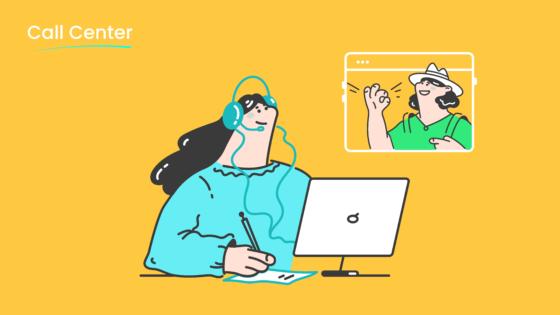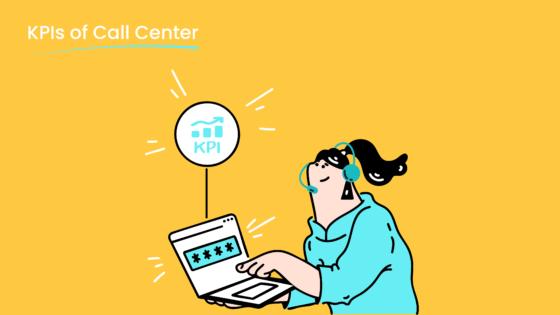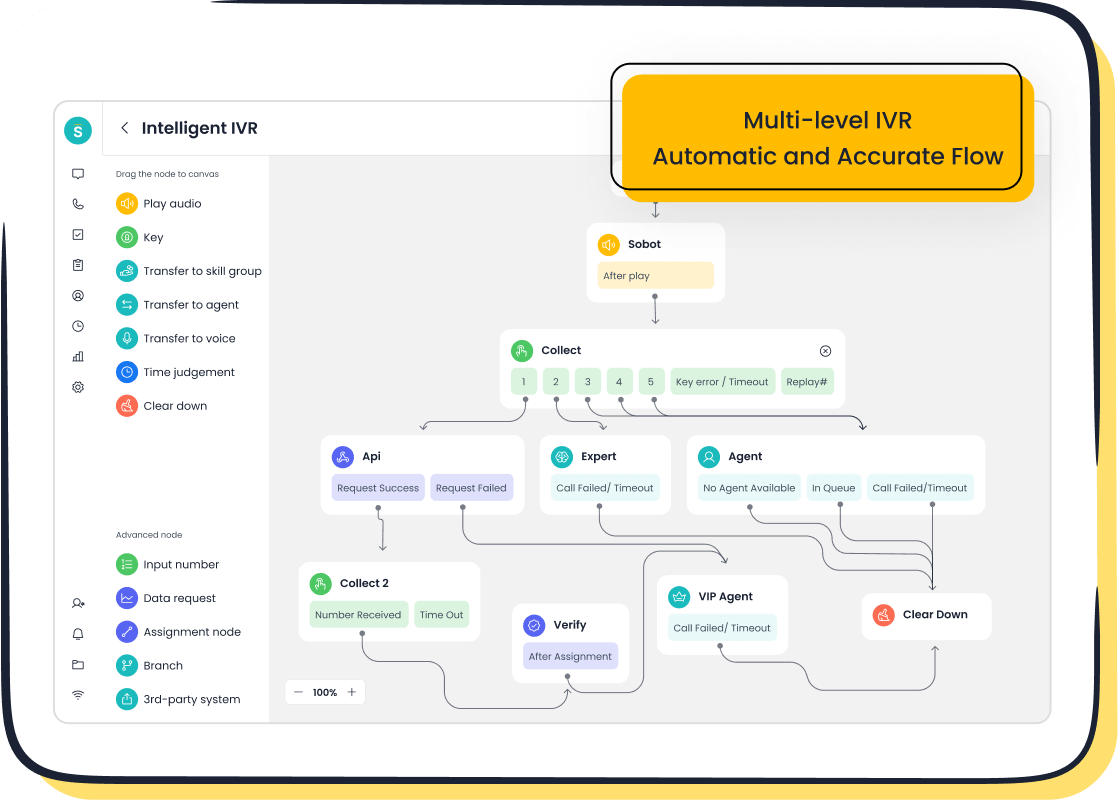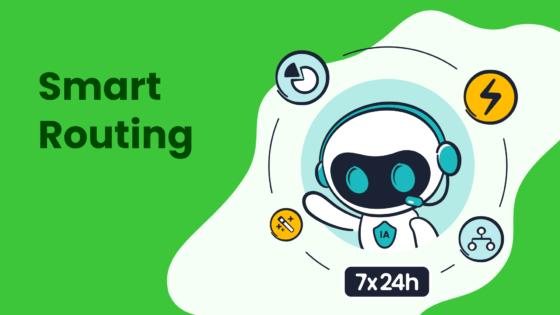Tips for Call Center Training and Seamless Agent Onboarding

Effective onboarding helps you keep new call center agents longer and boosts customer satisfaction. Studies show that strong onboarding can increase new hire retention by 82% and improve productivity by 70%. When you use structured training, you lower turnover and make agents feel confident and ready. Sobot AI and the Sobot call center platform support this process with innovative, customer-focused tools. These tips for call center training help you build a motivated team from day one.
Pre-Onboarding Essentials
Welcome and Orientation
You set the tone for agent onboarding from the very first interaction. When you welcome new hires with a personalized note or a team introduction, you help them feel valued and included. Sobot encourages you to send a warm welcome message and introduce new hires to their team before their first day. Research shows that comprehensive welcome and orientation programs improve role clarity, boost self-confidence, and help new hires adjust faster. Employees who experience structured onboarding are 69% more likely to stay with the company, which leads to higher retention and better performance. During the onboarding process, you can use Sobot’s unified workspace to schedule virtual meet-and-greets, making it easy for new hires to connect with mentors and managers. This early connection builds trust and sets the stage for a successful call center onboarding journey.
Company Overview and Culture
You help new hires understand your company’s mission and values by sharing your story and involving leadership in the onboarding process. When you communicate company culture early, you foster a sense of belonging and motivate new hires to engage with their work. Sobot recommends using storytelling and interactive workshops to help new hires connect their personal values with your organization’s goals. Leadership can share personal experiences to reinforce the importance of culture. This approach creates a motivated and cohesive team, which supports long-term success. When new hires feel aligned with your company’s vision, they become more committed and satisfied in their roles.
Preparing Tools and Access

You ensure a smooth start for new hires by preparing all necessary tools and access before their first day. Sobot’s Voice/Call Center platform makes this step easy. You can set up accounts, assign phone numbers, and configure permissions in advance. Early access to technology and tools has a direct impact on agent onboarding success. The following table shows how these features benefit your onboarding process:
| Feature/Benefit | Description |
|---|---|
| Automated Workflows | Save time by automating welcome emails, scheduling, and documentation. |
| Personalized Training Modules | Use AI-driven tools to tailor training to each agent’s needs. |
| Enhanced Communication | Enable seamless interaction between new hires, mentors, and managers. |
| Real-Time Performance Insights | Track onboarding progress and identify skill gaps quickly. |
| Consistent Delivery | Ensure every new hire receives the same high-quality onboarding experience. |
| Improved Engagement | Use immersive learning to boost motivation and confidence. |
Industry research highlights several best practices for agent onboarding:
- Prepare agents with tailored technology training and real call examples.
- Provide targeted coaching and set clear performance goals.
- Ensure compliance training on telemarketing laws and call recording.
- Equip agents with high-quality hardware like headsets and phones.
- Maintain secure operations with strong data security.
- Monitor call quality and train agents to troubleshoot.
By following these steps and using Sobot’s secure, scalable solutions, you create a strong foundation for every new hire onboarding experience. This approach leads to faster ramp-up times, better engagement, and improved customer interactions.
Training Programs
Role-Specific Skills
You need to build a strong foundation for your agents with comprehensive training that matches their roles. Sobot’s unified workspace lets you create hands-on exercises and mock calls, so agents can practice real scenarios before they talk to customers. This approach helps agents learn by doing, which reduces mistakes and boosts confidence. You can use a training checklist to track progress and make sure every agent covers the right skills. The table below shows how different training methods impact agent productivity and call resolution rates:
| Training Method | Impact on Agent Productivity and Call Resolution Rates |
|---|---|
| Hands-on Training | Agents learn by doing, which reduces errors and improves speed in real customer interactions. |
| Role-playing and Scenario-based | Builds confidence and problem-solving skills, leading to better de-escalation and faster resolution. |
| Personalized & Contextual Training | Increases engagement and skill development, which boosts proficiency and morale. |
| In-app Guidance via DAPs | Provides real-time support, so agents quickly find answers and improve performance during calls. |
| On-demand Agent Support | Offers continuous coaching and self-help, increasing job satisfaction and productivity. |
| Gamification | Makes training engaging and interactive, encouraging learning and faster feedback cycles. |
Soft Skills and Communication
You help agents succeed by teaching them how to listen, show empathy, and speak clearly. Research from McKinsey shows that 61% of customer service leaders say it takes at least three months to train a new agent to perform well. You can speed up this process with structured communication training. Focus on these core skills:
- Active listening and patience
- Empathy and emotional intelligence
- Clear and positive language
- Problem-solving during tough calls
Sobot’s AI-powered tools let you run role-playing exercises and give instant feedback. You can track progress with KPIs like first call resolution and customer satisfaction scores. This approach leads to better customer experiences and higher retention.
Product and Service Knowledge
You need agents who understand your products and services inside and out. Comprehensive training programs should include detailed product walkthroughs, FAQs, and real-life case studies. Sobot’s training and documentation tools make it easy to update materials and share them with your team. You can use interactive quizzes and mock calls to test knowledge and build confidence. When you invest in comprehensive training, you help agents answer questions faster and solve problems on the first call.
Tip: Use Sobot’s Voice/Call Center features to simulate real customer interactions and reinforce learning.
Tips for Call Center Training
Interactive Learning
You can make training more effective by using interactive learning methods. These methods help agents remember what they learn and apply it on the job. Many companies see better results when they use a mix of different training styles. Here are some proven ways to boost knowledge retention:
- Microlearning delivers small, focused lessons. Agents can finish these lessons quickly, even during busy shifts. For example, TD Bank saw a 30% increase in compliance training completion after using microlearning. This method fits well into a call center’s fast-paced environment.
- Gamification adds fun to training. You can use points, badges, and leaderboards to motivate agents. Interactive quizzes and games make learning enjoyable and memorable. Agents get instant feedback and want to keep improving.
- Blended learning combines classroom sessions, online courses, and hands-on practice. This approach works for different learning styles. Agents can learn at their own pace and reinforce skills through real-life scenarios.
- Simulation-based training puts agents in realistic situations. Companies like Amazon and American Express use simulations to help agents practice before taking real calls. This builds confidence and reduces mistakes.
- Peer-to-peer learning encourages agents to share tips and support each other. Mentoring and teamwork help everyone grow.
- Knowledge management systems give agents quick access to up-to-date information. This reduces training time and helps agents answer customer questions correctly.
Tip: Use Sobot’s unified workspace to deliver microlearning modules, run simulations, and track progress. Sobot’s platform supports blended learning and makes it easy to update training materials for your team.
When you use these interactive methods, you create a dynamic learning environment. Agents stay engaged and remember more. These tips for call center training help you build a team that learns quickly and adapts to new challenges.
Real-Time Feedback
You help agents improve faster when you give real-time feedback. This means you correct mistakes as they happen and praise good work right away. Real-time feedback keeps agents motivated and helps them learn from every call.
You can use Sobot’s Voice/Call Center platform to monitor calls and provide instant coaching. Supervisors can listen in, leave comments, or send quick messages during training sessions. This approach helps agents fix problems before they become habits.
A simple feedback loop might look like this:
| Step | Action |
|---|---|
| Observe | Listen to live or recorded calls |
| Comment | Give specific feedback on performance |
| Practice | Let agents try again with new guidance |
| Review | Check progress and set new goals |
You can also use gamification to give feedback. For example, agents earn points for correct answers in quizzes or for handling calls well. Leaderboards show top performers and encourage friendly competition.
Note: Real-time feedback works best when it is clear and positive. Focus on what agents do well and how they can improve. This keeps morale high and supports a culture of growth.
These tips for call center training ensure agents get the support they need, right when they need it. You build a team that learns quickly and feels confident on every call.
Continuous Improvement
You keep your call center strong by focusing on continuous improvement. This means you always look for ways to make training better and help agents grow. Here are some strategies that work well:
- Set clear training goals that match your business needs. This keeps everyone focused and makes training relevant.
- Use a blended approach with eLearning, in-person sessions, and simulations. This covers all learning styles and keeps training fresh.
- Add real-world scenarios like role-playing and mock calls. Agents practice what they learn and get ready for real customer situations.
- Leverage technology such as Learning Management Systems (LMS), Virtual Reality (VR), and AI-powered chatbots. These tools make training flexible and engaging.
- Create feedback loops between trainers and agents. Regular check-ins help you update training content and keep it useful.
- Audit your training programs often. Compare them to industry standards and make changes as needed.
- Measure success with KPIs, performance metrics, and customer feedback. This shows where you can improve.
- Use gamification to keep agents motivated and engaged.
Sobot’s omnichannel solution makes it easy to track agent progress and gather feedback. You can monitor training results in real time and adjust your programs quickly. For example, Sobot’s analytics tools help you spot skill gaps and update training modules right away.
Callout: Companies that focus on continuous improvement see higher customer satisfaction and better agent performance. Regular updates and feedback keep your team sharp and ready for any challenge.
When you follow these tips for call center training, you create a culture of learning and growth. Your agents stay motivated, your training stays relevant, and your customers notice the difference.
Onboarding New Call Center Agents with Sobot

Technology Integration
You set the stage for effective agent onboarding when you use the right technology from day one. Sobot’s unified workspace brings all your communication tools together. You give new hires access to calls, chats, and customer data in one place. This makes the onboarding process smooth and helps agents learn faster. With Sobot’s Voice/Call Center, you can automate tasks, assign leads, and track calls. You reduce manual work and let agents focus on helping customers. When you prepare technology before onboarding new call center agents, you boost their confidence and speed up their learning.
Omnichannel Support
You help agents succeed when you offer true omnichannel support. Sobot’s omnichannel solution connects voice, chat, email, and social media. This means agents can handle customer questions from any channel without switching systems. During agent onboarding, you ensure consistent messaging and set clear expectations for both agents and customers. You collect customer data early, which lets you personalize the onboarding process and improve agent readiness. Self-service portals and integrated channels reduce ticket overload, so agents can focus on complex cases. This approach leads to higher customer satisfaction and loyalty. You build trust and prevent confusion by keeping your onboarding process consistent across all channels.
- Omnichannel onboarding gives you:
- Consistent messaging for agents and customers
- Faster response times and less ticket overload
- Personalized journeys using early customer data
- Higher satisfaction and retention rates
Monitoring Progress
You track every step of the successful agent onboarding process with Sobot’s real-time analytics. You see how new hires perform, spot skill gaps, and adjust training right away. Sobot’s dashboards show you key metrics like call resolution rates and customer feedback. This helps you support agents and improve the onboarding process. For example, Agilent used Sobot’s omnichannel workbench and AI-powered chatbot to boost efficiency by six times and reach a 95% customer satisfaction score. You can achieve similar results by using data to guide your agent onboarding and training.
Tip: Use Sobot’s analytics to review onboarding new call center agents and make changes that lead to better results.
Agent Onboarding Support
Mentorship and Buddy System
You help new hires succeed when you pair them with experienced agents during agent onboarding. A buddy system lets new hires learn working styles and office routines quickly. This approach shortens ramp-up time and builds confidence. You also give seasoned agents a chance to develop leadership skills. When you use mentorship, you promote professional growth and increase job satisfaction. Here are some benefits of a buddy system in agent onboarding:
- New hires learn best practices from top performers.
- Ramp-up time drops as new hires see real examples.
- Experienced agents gain supervisory experience.
- Job satisfaction rises for both new and seasoned staff.
- Lower turnover supports a stable team.
Sobot’s unified workspace makes it easy for mentors and new hires to connect, share feedback, and track progress. You can assign buddies and monitor their interactions, ensuring every agent onboarding journey starts strong.
Regular Check-Ins
You support new hires by scheduling regular check-ins during the first 30 days. These meetings help you spot challenges early and offer guidance. Frequent feedback keeps new hires engaged and motivated. You can use Sobot’s analytics to review call performance and address skill gaps right away. Regular check-ins also let you celebrate small wins, which boosts morale. When you make these meetings part of your agent onboarding process, you build trust and set clear expectations.
Tip: Use short surveys or quick chats to gather feedback from new hires. This helps you improve your employee onboarding program and respond to needs fast.
Building Team Connection
You create a strong team when you help new hires build connections from day one. Group activities, team lunches, or virtual meetups make new hires feel welcome. A sense of belonging improves retention and job satisfaction. During agent onboarding, you can use Sobot’s communication tools to organize team-building events and share company news. When new hires feel part of the team, they adapt faster and perform better in their first 30 days.
A connected team supports each other, shares knowledge, and delivers better customer service. You lay the foundation for long-term success by making team connection a core part of agent onboarding and employee onboarding.
New Employee Onboarding Best Practices
Clear Expectations
You set your agents up for success when you give them clear expectations from the start. During agent onboarding, you outline job roles, daily tasks, and performance standards. This helps new hires understand what you expect and how they can succeed. When you use effective onboarding, you reduce confusion and boost confidence. Sobot’s unified workspace lets you share training materials, schedules, and company policies in one place. This makes it easy for agents to find answers and stay on track. You can also use checklists to help agents see their progress and know what comes next. Clear expectations lead to faster learning and better results.
Performance Benchmarks
You improve agent onboarding by setting measurable performance benchmarks. These benchmarks show new hires how to reach their goals and track their growth. When you measure time-to-productivity, training completion rates, and new hire satisfaction, you spot gaps early and make quick changes. Here are some ways performance benchmarks help your team:
- Boost productivity and engagement
- Increase retention and job satisfaction
- Help agents reach full readiness faster
- Align agents with company goals and role expectations
- Lower turnover costs and improve team morale
You can use Sobot’s analytics tools to track these metrics in real time. Regular check-ins at 30, 60, and 90 days help you monitor progress and address issues before they grow. When you compare your benchmarks to industry standards, you keep your agent onboarding program strong and competitive.
Feedback Loops
You build a culture of growth when you create feedback loops during agent onboarding. Frequent feedback helps agents learn from mistakes and celebrate wins. You can use surveys, one-on-one meetings, or quick chats to gather input from new hires. Sobot’s platform makes it easy to collect feedback and share insights with your team. When you act on this feedback, you improve your employee onboarding program and keep agents engaged. Effective onboarding practices rely on open communication and regular feedback to drive continuous improvement.
Tip: Agents who receive regular feedback during onboarding are nearly twice as likely to feel prepared and satisfied in their roles.
Call Center Onboarding Technology

Automation Tools
You can speed up call center agent onboarding with automation tools. These tools give new agents conversation guidance, so they know what to say and do during customer calls. You do not have to search through long documents or switch between many screens. Automation brings all the important information into one place. This helps you learn faster and feel more confident. For example, Sobot’s Voice/Call Center platform integrates knowledge bases and CRM data into a single workspace. You see customer details, call scripts, and helpful prompts right when you need them. This reduces mistakes and helps you focus on the customer. Automation tools also handle repetitive tasks, like logging calls or updating records, so you can spend more time learning and less time on paperwork.
Tip: Automation tools help you onboard faster and reduce stress by making information easy to find.
E-Learning Platforms
You can use e-learning platforms to make call center training flexible and engaging. These platforms let you learn at your own pace. You can watch videos, take quizzes, and practice with real-life scenarios. Sobot’s unified workspace supports e-learning by giving you access to training modules and resources anytime. Many companies use e-learning to train large teams quickly. For example, a study from Brandon Hall Group found that e-learning can cut training time by up to 60%. You can review lessons as often as you need, which helps you remember more. E-learning also makes it easy for managers to update training content and track your progress.
Progress Tracking
You can improve your call center agent onboarding with progress tracking technology. This technology sets clear KPIs and milestones, so you know what to expect and how to measure your growth. Here is how progress tracking helps you:
- You get a structured onboarding plan with clear goals.
- Automated QA tools review your calls and give feedback.
- Managers use conversation intelligence to share best practices.
- AI-powered prompts guide you during live calls.
- You feel more engaged and supported, which helps you stay in your job longer.
Sobot’s analytics dashboard lets you and your manager see your progress in real time. You can spot skill gaps early and get the coaching you need. Progress tracking makes onboarding smoother and helps you become a skilled call center agent faster.
Note: When you use call center onboarding technology like automation, e-learning, and progress tracking, you build a stronger, more confident team.
You build a strong call center team when you use structured onboarding and training. Gamification, personalized learning, and team building help agents learn faster and stay engaged. Data shows that AI-powered tools and omnichannel support, like Sobot’s Voice/Call Center, boost agent performance and customer satisfaction. You can track progress, give real-time feedback, and shorten training time. Explore Sobot’s solutions to create seamless agent onboarding and deliver better customer experiences every day.
FAQ
What is the most important part of call center training?
You need to focus on real-world practice. Agents learn best when they handle mock calls and use actual tools. Sobot’s unified workspace lets you run simulations and track progress. Studies show that hands-on training improves retention by 75% (ATD Research).
How long does agent onboarding usually take?
Most companies finish agent onboarding in 2 to 4 weeks. You can speed up the process with Sobot’s automation tools and e-learning modules. Fast onboarding helps agents feel confident and ready to serve customers sooner.
Why should you use technology for onboarding new call center agents?
Technology makes employee onboarding faster and more consistent. Sobot’s Voice/Call Center platform gives you real-time feedback, automated workflows, and easy access to training. This reduces errors and helps agents reach full productivity quickly.
Tip: Use analytics to spot skill gaps early and adjust your call center training plan.
How do you measure success in agent onboarding?
You track key metrics like time-to-productivity, training completion, and customer satisfaction scores. Sobot’s analytics dashboard shows you these numbers in real time. Companies that measure onboarding see 54% higher productivity in new hires (SHRM).
